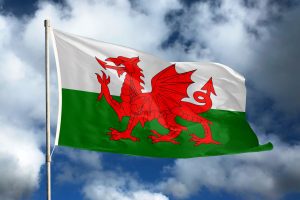Yesterday, Prime Minister Rishi Sunak called a snap general election for July 4th – polling day is exactly six weeks away. There are 650 seats up for grabs, and just over 100 MPs standing down.
In a speech outside Downing Street in the rain, while someone played “Things Can Only Get Better,” the 1997 song from Tony Blair’s campaign, Sunak insisted he had stabilised the nation after Covid and Ukraine, while criticising Labour for their lack of plans and policies.
The Conservatives are currently 21 points behind Labour in the polls. Co-founder of the Local Elections Centre, Michael Thrasher stated, “No party has ever succeeded in recovering from a position where the Conservatives find themselves in the national polling.” So the question remains, why did Sunak call the election now, and is there more than meets the eye on how behind the Conservatives are?
Why Call an Election with Your Party So Far Behind in the Polls?
One factor to consider is the economy. Yesterday’s figures showed that inflation rates fell to 2.3% – the lowest in almost three years. Sunak can attribute this to a ‘Conservative success’, even though it is not solely due to government actions. This achievement aligns with Sunak’s claim that the UK economy is growing faster than other G7 countries.
On the other hand, there is a risk the economy could worsen, suggesting Sunak believes his party’s prospects may not improve. Therefore, calling the election now allows the Conservatives to leverage current positive economic figures. Furthermore, with the budget being one of the biggest pre-election tools and OBR forecasts indicating there will be no money left for an ambitious, tax-cutting autumn statement, calling the election now appears most viable.
Another factor is immigration. The recently passed Rwanda bill plans to send some asylum seekers to Rwanda, with flights potentially imminent. Sunak’s efforts to stop the boats align with public sentiment favouring reduced net migration figures.
The Reform Party also plays a role. There is a danger that Reform UK is gaining traction among Tory voters. However, Reform has not fully prepared its manifesto and would be better positioned for an election by autumn. Therefore, calling the election early could help the Tories retain votes in areas where allegiances might change. Furthermore, with Nigel Farage having been unsure about his standing as a Reform MP (likely giving them a polling boost), the element of surprise would have played to the Conservatives’ benefit.
How Big Actually is Labour’s Lead?
If the polls are accurate, Starmer’s Labour Party is poised to decisively defeat the Conservatives in the general election. With less than a 1% chance of Conservatives winning, a Labour majority seems likely.
However, Focaldata suggests Labour’s popular vote is lower than national polling estimates. There is a notable difference between a purity poll: ‘how many people would express their support for each party if we managed to contact the whole electorate?’ and a reality poll: ‘how many people would actually vote for each party if a general election were held today?’ YouGov found that in a purity poll, Labour led with 21%, whereas in a reality poll, Labour led with only 13.5%.
Additionally, satisfaction rates with Labour among the electorate play a role. Sunak has often claimed that Labour ‘has no plan’ – a sentiment somewhat reflected in public opinion. In April 2024, 31% of those polled said Labour was fit to govern, compared to 41% in 2014 before a Conservative-won general election. Only 24% believe Labour has a good team of leaders, compared to 31% then, while 39% think Labour understands the problems facing the UK, compared to 52% back then.
The stark empirical difference, however, is the significant drop in support for the Conservatives.

Final Thought
Sunak’s decision to call a snap election is high-risk – driven by economic indicators, immigration developments, and the looming threat of Reform UK.
Whilst one thing is for certain: the crash in support for the Conservatives, Labour’s lead appears formidable. Fluctuating poll dynamics and voter sentiments add a layer of uncertainty as to how big Labour’s majority will be.
This election will determine whether Sunak’s timing hinders or serves the future of the Conservative party and in what ways the political landscape will be reshaped.
For more of Chamber’s electoral analysis, please click here.




